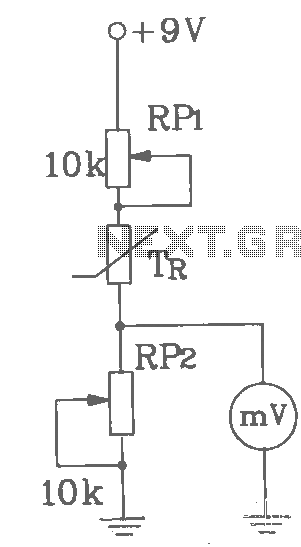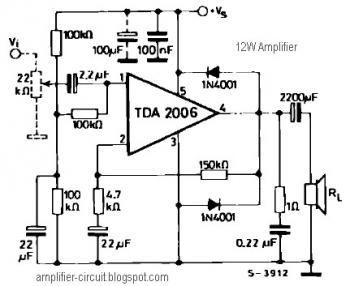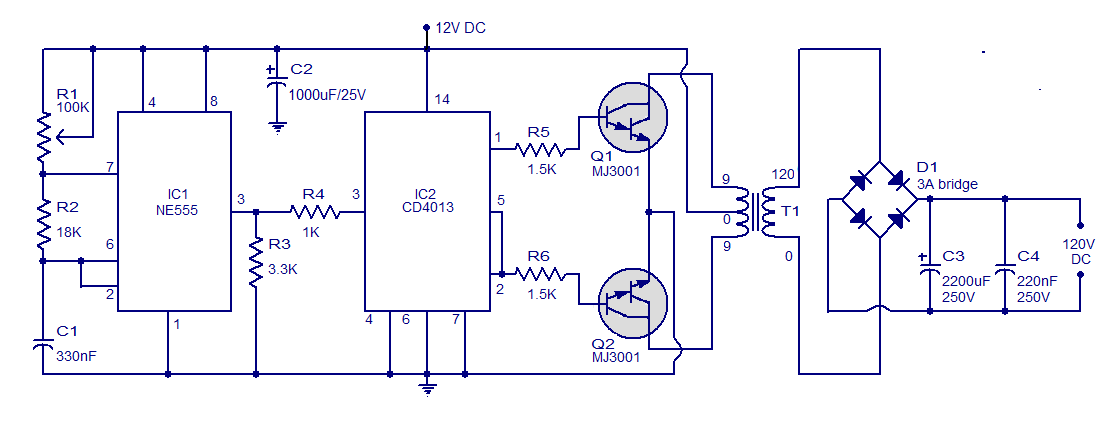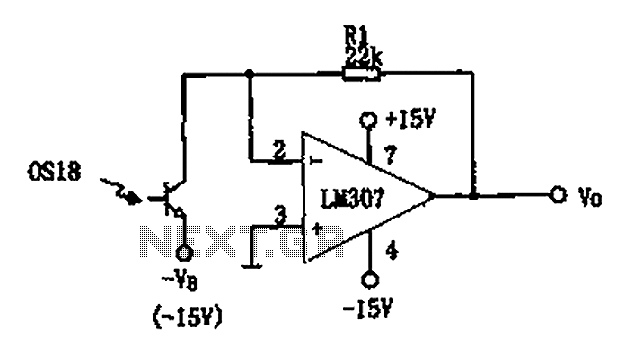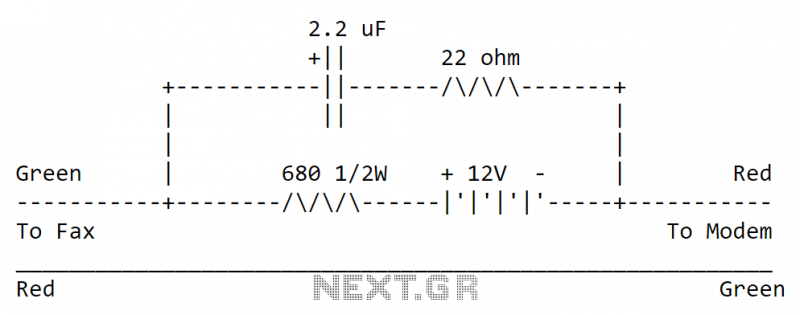
Interface Circuit for PC Soundcard Oscilloscope
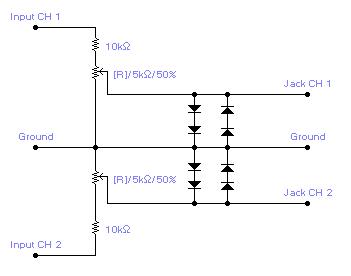
For simple electronic circuits, it may be sufficient to gain qualitative insights on dedicated electrical signals. This interface circuitry allows the line-in input of a standard PC sound card to be utilized as a 2-channel oscilloscope. Although this setup does not permit precise measurements, it can provide qualitative insights into dedicated timing or signal characteristics. The interface restricts the signals from input channels 1 and 2 to a maximum amplitude of 1.2 V, incorporating over-voltage protection circuitry. On the left side of the schematic, the two input channels for signal measurement and the common ground are depicted. On the right side, adjacent to the protection diodes, the connections for the 3.5 mm stereo jack to the sound card (line-in) are illustrated. The signal amplitude displayed within the oscilloscope can be adjusted using two trimmers with a known amplitude signal (e.g., a rectified 5V signal). Since most line-in inputs are AC-coupled, pure DC signals are unsuitable for calibrating voltage levels. Notably, there are now effective software tools available for PC sound cards (Windows XP) from Sebastian Dunst: AudioAnalyzer & MultiSine.
This interface circuitry serves as a valuable tool for hobbyists and engineers seeking to analyze electrical signals without the need for expensive dedicated oscilloscopes. The design accommodates two input channels, each capable of handling signals up to 1.2 V, which is crucial for protecting the sound card's input from potential damage due to over-voltage conditions. The schematic layout includes clear demarcations for the input channels and a common ground reference, ensuring proper signal integrity during measurements.
The integration of protection diodes is an essential feature, as it safeguards the sound card from voltage spikes that could occur during operation. The 3.5 mm stereo jack connections facilitate easy interfacing with the sound card, allowing for straightforward signal acquisition. The adjustable trimmers enable calibration of the oscilloscope's display to match known voltage levels, enhancing the accuracy of qualitative assessments.
It is important to note that due to the AC-coupling nature of most line-in inputs, the use of pure DC signals is not recommended for calibration purposes. Instead, employing a rectified 5V signal provides an effective means of adjusting the display amplitude. The availability of software tools such as AudioAnalyzer and MultiSine further enhances the functionality of this setup, enabling users to visualize and analyze waveforms on their computers effectively. This combination of hardware and software creates a versatile platform for signal analysis in various applications, making it a practical solution for those working with basic electronic circuits.For simple electronic circuits, it may be sufficient to get a qualitative insight on dedicated electrical signals. This interface circuitry allows to use the line-in input of a standard PC soundcard to be used as a 2-channel oscilloscope.
This setup does not allow for exact measurements, however for some applications, a qualitative insight on dedi cated timing or signal characteristics may be obtained. The interface limits the signals from input channel 1 and 2 to a maximum amplitude of 1. 2 V (over-voltage protection circuitry). At the left side of the schematic below, the two input channels for signal measurement and the common ground are shown. At the right side, next to the protection diodes, the connections for the 3. 5 mm stereo jack to the soundcard (line-in) are drawn. The height of the signal amplitude shown within the OSZI can be adjusted with the two trimmers with signal of known amplitude (e.
g. a rectified 5V signal). Since most line-in are AC-coupled, pure DC signals are not suitable for calibration of the voltage levels. Note: There exist now very nice software tools for your PC soundcard (Windows XP) from Sebastian Dunst: AudioAnalyzer & MultiSine.
See the software section. 🔗 External reference
This interface circuitry serves as a valuable tool for hobbyists and engineers seeking to analyze electrical signals without the need for expensive dedicated oscilloscopes. The design accommodates two input channels, each capable of handling signals up to 1.2 V, which is crucial for protecting the sound card's input from potential damage due to over-voltage conditions. The schematic layout includes clear demarcations for the input channels and a common ground reference, ensuring proper signal integrity during measurements.
The integration of protection diodes is an essential feature, as it safeguards the sound card from voltage spikes that could occur during operation. The 3.5 mm stereo jack connections facilitate easy interfacing with the sound card, allowing for straightforward signal acquisition. The adjustable trimmers enable calibration of the oscilloscope's display to match known voltage levels, enhancing the accuracy of qualitative assessments.
It is important to note that due to the AC-coupling nature of most line-in inputs, the use of pure DC signals is not recommended for calibration purposes. Instead, employing a rectified 5V signal provides an effective means of adjusting the display amplitude. The availability of software tools such as AudioAnalyzer and MultiSine further enhances the functionality of this setup, enabling users to visualize and analyze waveforms on their computers effectively. This combination of hardware and software creates a versatile platform for signal analysis in various applications, making it a practical solution for those working with basic electronic circuits.For simple electronic circuits, it may be sufficient to get a qualitative insight on dedicated electrical signals. This interface circuitry allows to use the line-in input of a standard PC soundcard to be used as a 2-channel oscilloscope.
This setup does not allow for exact measurements, however for some applications, a qualitative insight on dedi cated timing or signal characteristics may be obtained. The interface limits the signals from input channel 1 and 2 to a maximum amplitude of 1. 2 V (over-voltage protection circuitry). At the left side of the schematic below, the two input channels for signal measurement and the common ground are shown. At the right side, next to the protection diodes, the connections for the 3. 5 mm stereo jack to the soundcard (line-in) are drawn. The height of the signal amplitude shown within the OSZI can be adjusted with the two trimmers with signal of known amplitude (e.
g. a rectified 5V signal). Since most line-in are AC-coupled, pure DC signals are not suitable for calibration of the voltage levels. Note: There exist now very nice software tools for your PC soundcard (Windows XP) from Sebastian Dunst: AudioAnalyzer & MultiSine.
See the software section. 🔗 External reference
